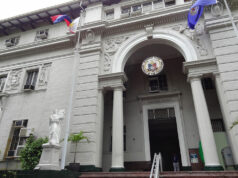ARMM fishermen’s average income doubles; RBOI seeks aquaculture investments
FISHERMEN IN the Autonomous Region in Muslim Mindanao (ARMM) have seen their average monthly income double in the last two years with regional government interventions, and the local investment board is now looking at avenues for expanding the aquaculture industry.
“From P3,495 in 2014, the monthly income of a fisherman in the region is now P7,005,” Governor Mujiv S. Hataman said in his state of the region address delivered last week, citing data from the ARMM-Department of Agriculture and Fisheries that are due for release by yearend.
A total of 159,123 fishermen are operating in the 18,426,613 hectares of territorial waters under the ARMM’s administrative jurisdiction, which comprises the provinces of Maguindanao, Lanao del Sur, Basilan, Sulu and Tawi-Tawi.
Mr. Hataman said programs in the last seven years are now slowly being felt, including the distribution of boats, help in setting up fish cages, other funding assistance, and alternative livelihood projects.
At the same time, he said there is a lot of room for growth, particularly expanding commercial opportunities for the available high-value marine resources.
A primer from the Regional Board of Investments (RBOI) outlines the region’s comparative aquatic industry advantage over other regions.
“The vast coastline of Sulu has abundant coral reef rich in marine resources. With Tawi-Tawi, Sulu produces around 72% of the country’s seaweeds,” it said.
The major fishing grounds in the ARMM include Illana Bay, Moro Gulf, Basilan Strait, Sulu Sea and Celebes Sea, all rich in various fish as well as other aquatic resources.
In 2016, ARMM produced 824,314 metric tons (MT) of fishery products, comprising 19% of the country’s 4.35 million MT total. ARMM harvested about 44% of the national seaweeds output tracked at 1.4 million MT.
Janice Desamito-Musali, director of the ARMM-Bureau of Fisheries and Aquatic Resources, earlier said the high seaweed production of the region could be attributed to various factors, including the long coastline highly suitable to seaweed farming.
“Good weather conditions, lesser occurrences of ‘ice-ice’ diseases, good quality planting materials and favorable water conditions enhanced the growth of more seaweeds in our region in 2016,” said Ms. Musali.
However, the ARMM’s total fishery output last year fell below other regions’ performance in terms of value.
The RBOI said in many regions that posted higher fishery production values, the focus is on modern commercial-scale aquaculture through fishponds and farms that produce high-value freshwater species.
In the case of the neighboring regions of Zamboanga Peninsula and SOCCSKSARGEN (South Cotabato, Cotabato, Sultan Kudarat, Sarangani, General Santos City), the major contributors in raising the value of their outputs are the presence of government-run fishing ports that handle commercial fish catch on a 24-hour basis.
Ms. Musali said they have taken notes on the gaps in ARMM and are aiming to roll out programs that would help the fishery sector grow, including attracting investors in the aquaculture industry. — Mindanao Bureau



